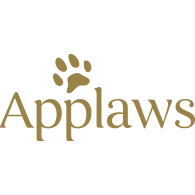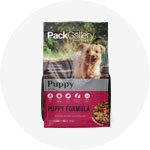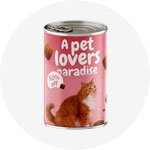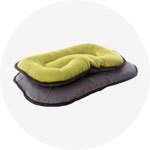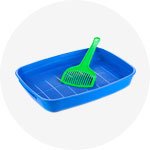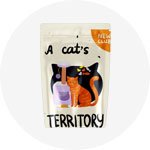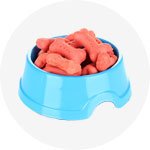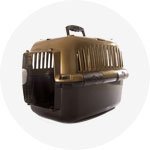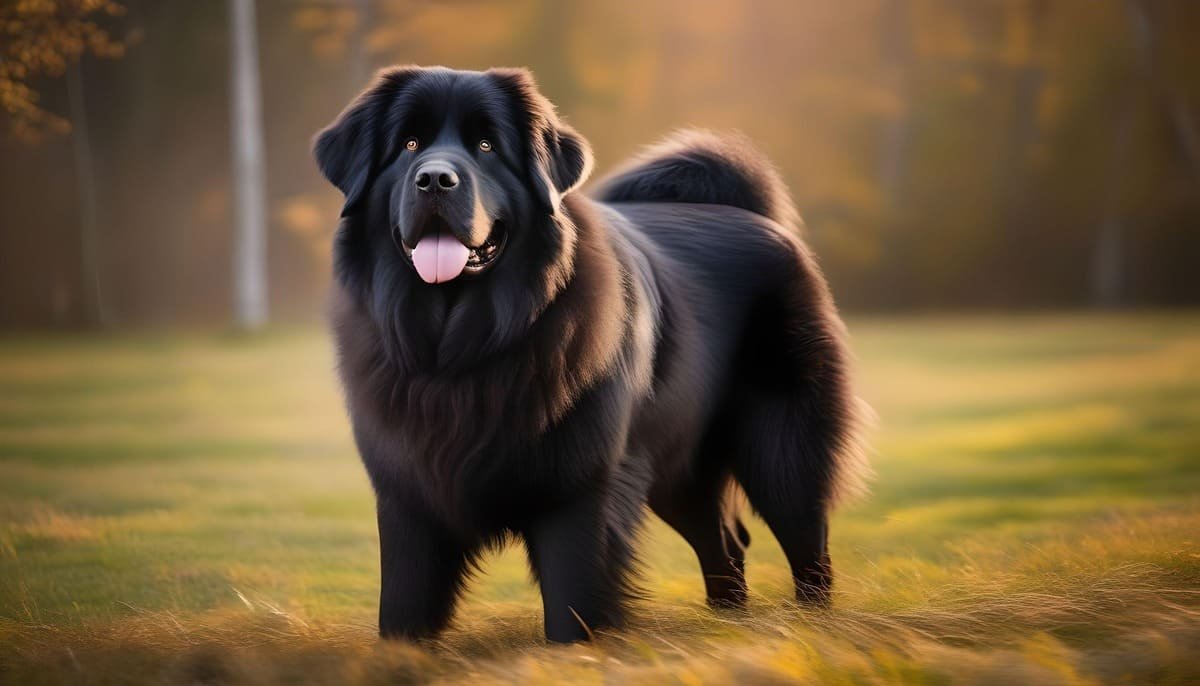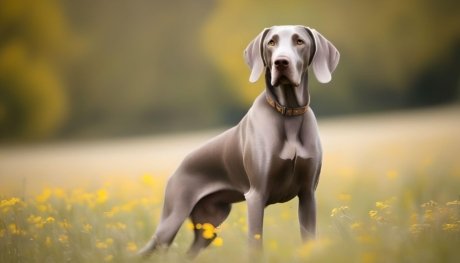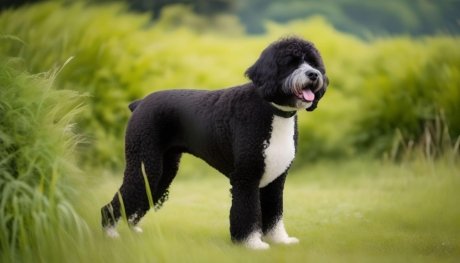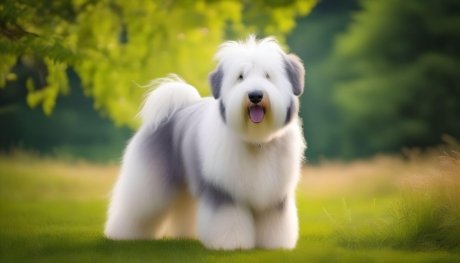Newfoundland Dog: Prices, Traits, Colours, 10 Facts, Care Tips and Health Issues
Have you thought of bringing a Newfoundland dog home to India? As with any pet, it is important to do your research and understand the costs involved. In this article, we discuss Newfoundland dogs in India and what factors can affect their cost. Whether you are a first-time dog owner or an experienced pet parent, this guide will provide you with valuable information about the Newfoundland dog breed and the costs associated with owning one.
Newfoundland Dog
1. Gentle Giants with a Warm Heart:
Newfoundlands, often referred to as “gentle giants,” are renowned for their calm and friendly nature. Despite their imposing size, these dogs are cherished for their affectionate disposition, making them exceptional family pets and reliable companions.
2. Diverse Coat Colors:
Explore the captivating colors that adorn the Newfoundland’s luxurious double coat. From the classic black and brown hues to the distinctive Landseer variety, featuring a predominantly white coat with bold black markings, each color pattern adds to the breed’s aesthetic appeal.

3. Landseer Newfoundland:
Dive deeper into the Landseer Newfoundland, a standout variety known for its striking black and white coat. Recognized as a separate color pattern, Landseers showcase the breed’s elegance with their unique markings and captivating presence.
4. Intelligence and Trainability:
Uncover the Newfoundland’s exceptional intelligence and trainability. These dogs excel in various roles, from water rescue to therapy work. Learn how their quick wit and eagerness to please make them adaptable and responsive to training.
5. Size and Strength:
Delight in the impressive size and strength of the Newfoundland breed. Understand how their robust build, towering stature, and powerful swimming abilities contribute to their historical roles as working companions for fishermen.
6. Choosing the Right Newfoundland for You:
For potential owners, gain insights into considerations when choosing a Newfoundland dog. From temperament to grooming requirements, this section guides you through factors that ensure a harmonious match between the breed and your lifestyle.
Newfoundland Dog Puppy
The Newfoundland Dog puppy is a bundle of fur and affection, known for its gentle nature and intelligence. These adorable puppies are characterized by their fluffy coats, webbed feet, and expressive eyes. As they grow, Newfoundland puppies develop into large and strong dogs, embodying the true spirit of a gentle giant. Early socialization and training are crucial for these lovable companions to ensure they become well-behaved adult dogs.
Mini Newfoundland Dog
While the Newfoundland Dog is typically known for its impressive size, there’s a growing interest in Mini Newfoundland Dogs. These smaller versions retain the breed’s distinctive characteristics but come in a more manageable size. Mini Newfoundlands still boast the friendly and gentle temperament of their larger counterparts, making them suitable for families with limited space. Despite their smaller stature, they remain loyal, devoted, and make excellent companions.
Bear Newfoundland Dog
The term “Bear Newfoundland Dog” aptly describes the imposing appearance of this majestic breed. With their thick, water-resistant double coats and large frames, these dogs resemble bears in both size and stature. Known for their strength and swimming prowess, Bear Newfoundland Dogs are often associated with water rescue work. Their powerful build, combined with a calm and sweet temperament, makes them not only impressive to look at but also wonderful family pets.

Landseer Newfoundland Dog
The Landseer Newfoundland Dog is a distinct color variant of the breed, characterized by a predominantly white coat with black markings. Named after the famous painter Edwin Landseer, who frequently featured these dogs in his artwork, Landseer Newfoundlands share the same gentle and friendly nature as their solid-colored counterparts. These dogs are equally skilled in water rescue and are cherished for their striking black-and-white appearance.
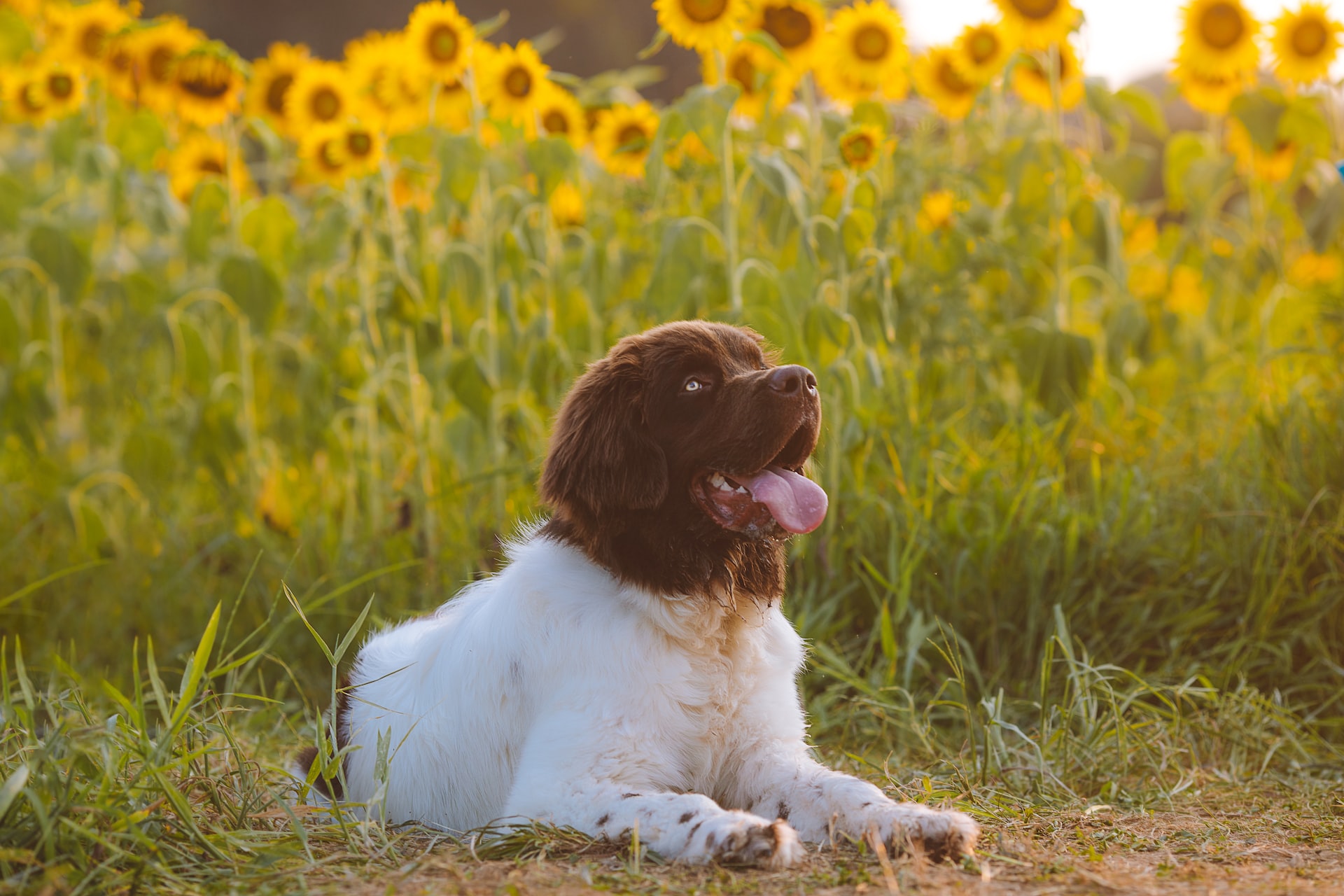
Shaved Newfoundland Dog
While the typical Newfoundland Dog sports a thick, double coat, there are instances where shaving becomes necessary. Shaving a Newfoundland can be done for practical reasons, such as managing mats and tangles in their fur or to keep them cool in warmer climates. It’s essential to approach shaving with caution, considering the breed’s susceptibility to sunburn without their natural coat protection. Regular grooming, whether through brushing or occasional shaving, helps maintain the health and appearance of the Newfoundland Dog’s distinctive coat.
Giant Newfoundland Dog
The Newfoundland Dog is renowned for its giant size, and rightfully so. These dogs are among the largest breeds, with males weighing up to 150 pounds or more. Despite their imposing stature, Giant Newfoundlands are known for their gentle and sweet temperament, making them excellent family pets. Their strength and swimming abilities also contribute to their historical role as water rescue dogs. Proper training, socialization, and care are crucial for ensuring that these gentle giants thrive in various environments and fulfill their potential as loving companions.

Bernese Mountain Dog Vs Newfoundland
Here is the comparision and differences between Bernese Mountain Dog Vs Newfoundland:
| Characteristic | Bernese Mountain Dog | Newfoundland |
|---|---|---|
| Origin | Switzerland | Newfoundland, Canada |
| Size | Large | Giant |
| Coat | Long, silky, tricolor (black, white, rust) | Thick, double coat, various colors |
| Temperament | Affectionate, loyal, good-natured | Gentle, sweet, patient |
| Activity Level | Moderate | Moderate to low |
| Exercise Needs | Regular exercise, moderate activity | Moderate exercise, swimming preferred |
| Grooming | Regular brushing, especially during shedding seasons | Regular brushing, may require more attention due to dense coat |
| Intelligence | Intelligent, trainable | Intelligent, easy to train |
| Health Concerns | Prone to certain genetic health issues, including hip dysplasia | Prone to certain health issues, including hip dysplasia |
| Lifespan | 6-8 years | 8-10 years |
| Suitability as a Family Pet | Excellent with families, good with children | Excellent with families, good with children |
| Historical Roles | Draft and farm work | Water rescue, working dog |
| Distinctive Features | Tri-color coat, distinctive facial markings | Large size, webbed feet for swimming |
Newfoundland Dog Colours
Newfoundland dogs exhibit a variety of colors, contributing to their distinct appearance. Recognized standard colors for this breed include black, brown, gray, and Landseer, which is characterized by a predominantly white coat with distinct black markings. The Landseer variety is acknowledged as a separate color pattern within Newfoundland breed standards.

White Newfoundland Dog
While not traditionally white, Landseer Newfoundlands are known for their predominantly white coat with black markings. This unique color pattern, officially recognized, sets them apart from the more common solid-colored Newfoundland dogs.
Black Newfoundland Dog
Solid black coats are iconic for Newfoundland dogs. This classic and well-recognized color is a hallmark of the breed, contributing to their majestic and imposing presence.
Grey Newfoundland Dog
Less common but accepted, the grey or silver Newfoundland showcases a mix of shades that creates a striking silver appearance. While not as prevalent as black or brown, grey Newfoundlands are recognized within the breed standard.
Brown Newfoundland Dog
Another standard color for Newfoundlands is brown, ranging from a deep mahogany to a lighter shade. This rich and warm color adds to the diversity within the breed.
Chocolate Newfoundland Dog
While “chocolate” is sometimes used interchangeably with brown, it generally refers to a lighter or milk chocolate hue in the Newfoundland coat. The specific shade can vary, providing a unique twist to the traditional brown coloring.
Newfoundland Dog Black And White
A Newfoundland with a black and white coat pattern is typically a Landseer. This variety features a predominantly white coat with well-defined black markings, often on the head, back, and part of the body, offering a distinct and eye-catching appearance.
Newfoundland Dog Brown And White
Similar to the black and white Landseer, there are brown and white Landseer Newfoundlands. These dogs boast a white base coat adorned with distinctive brown markings, showcasing a delightful blend of colors.
Newfoundland Black Pyrenees Dog
While there isn’t a recognized breed specifically termed “Newfoundland Black Pyrenees,” this may refer to a crossbreed between a Newfoundland and a Great Pyrenees, possibly featuring black coloring. Crossbreeds can display a combination of traits from both parent breeds, including coat color.
Newfoundland Dog Mix
A Newfoundland Dog Mix refers to a dog that is a crossbreed, combining the traits of a Newfoundland with those of another breed. These mixes can inherit a variety of characteristics from both parent breeds, including size, coat type, and temperament. The popularity of Newfoundland mixes has grown as they often bring together the best qualities of different breeds.

Newfoundland Bernese Mountain Dog Mix
The Newfoundland Bernese Mountain Dog Mix is a crossbreed that combines the Newfoundland and the Bernese Mountain Dog. Both parent breeds are large and known for their gentle temperament. The mix may exhibit a combination of traits from both breeds, including a thick double coat and a friendly disposition.
Newfoundland Dog Labrador Retriever Mix
A Newfoundland Dog Labrador Retriever Mix results from crossing a Newfoundland with a Labrador Retriever. This mix may inherit the Labrador’s friendly and outgoing nature along with the Newfoundland’s gentle temperament. Physical characteristics can vary, but they typically have a substantial build and may display a water-resistant double coat.
Newfoundland Dog Mixed With Black Lab
When a Newfoundland is mixed with a Black Labrador, the resulting mix combines the characteristics of both breeds. This can include the Labrador’s intelligence and the Newfoundland’s calm and friendly demeanor. The coat color may vary, but black is a common color in both parent breeds.
Newfoundland Poodle Mix Dog
The Newfoundland Poodle Mix, also known as a Newfypoo or Newdle, is a cross between a Newfoundland and a Poodle. This mix often combines the Poodle’s hypoallergenic coat with the Newfoundland’s friendly nature. These dogs can vary in size, and their coat may range from curly to wavy.
Newfoundland Dog St Bernard Mix
A Newfoundland Dog St. Bernard Mix results from crossing a Newfoundland with a St. Bernard. Both parent breeds are large working dogs with gentle temperaments. The mix may inherit traits from both breeds, including a thick coat and a loving disposition.
Newfoundland Border Collie Mix Dog
A Newfoundland Border Collie Mix is a crossbreed that combines the Newfoundland with the Border Collie. This mix may exhibit a blend of characteristics from both parent breeds, including intelligence, agility, and a friendly demeanor. The coat may vary, and the size is likely to be influenced by both breeds.
Top 10 Dogs Like Newfoundland
If you’re interested in dogs similar to the Newfoundland, you may want to consider breeds that share certain characteristics such as size, temperament, and appearance. Here are some dog breeds that share certain traits with Newfoundlands:
- Bernese Mountain Dog: Similar in size and temperament, Bernese Mountain Dogs are known for their gentle nature and striking tri-color coat. They, like Newfoundlands, are often good with families.
- Leonberger: This breed is large and has a gentle and friendly disposition. Leonbergers often make good family pets and have a thick, water-resistant coat.
- St. Bernard: Like Newfoundlands, St. Bernards are large working dogs with a calm and gentle temperament. They are known for their loyalty and are good with children.
- Great Pyrenees: Known for their majestic appearance and protective instincts, Great Pyrenees are large dogs with a thick double coat. They are gentle giants that make excellent family guardians.
- Tibetan Mastiff: This ancient breed is large, powerful, and protective. They have a thick double coat, and while they can be independent, they are often loyal to their families.
- Irish Wolfhound: Among the tallest dog breeds, Irish Wolfhounds are known for their gentle and friendly nature. Despite their size, they are generally good with children and other pets.
- Flat-Coated Retriever: While not as massive as Newfoundlands, Flat-Coated Retrievers share the friendly and outgoing temperament. They have a dense, waterproof coat and are excellent family companions.
- Golden Retriever: Known for their friendly and tolerant attitude, Golden Retrievers are medium to large-sized dogs with a love for water, similar to Newfoundlands. They are often great family pets.
- Chesapeake Bay Retriever: These dogs are known for their love of water and retrieving. While slightly smaller than Newfoundlands, they share a similar water-resistant coat and a loyal temperament.
- Alaskan Malamute: A large and powerful breed, Alaskan Malamutes are known for their strength and endurance. They have a thick, double coat and are friendly, although they can be more independent.
Newfoundland Dog History
The Newfoundland dog has a rich history dating back to the 18th century. Originating from Newfoundland, Canada, these dogs were initially working companions for fishermen. They were highly valued for their strength, swimming abilities, and gentle temperament. Over time, Newfoundlands gained recognition for their versatility and became popular not only as working dogs but also as beloved family pets.
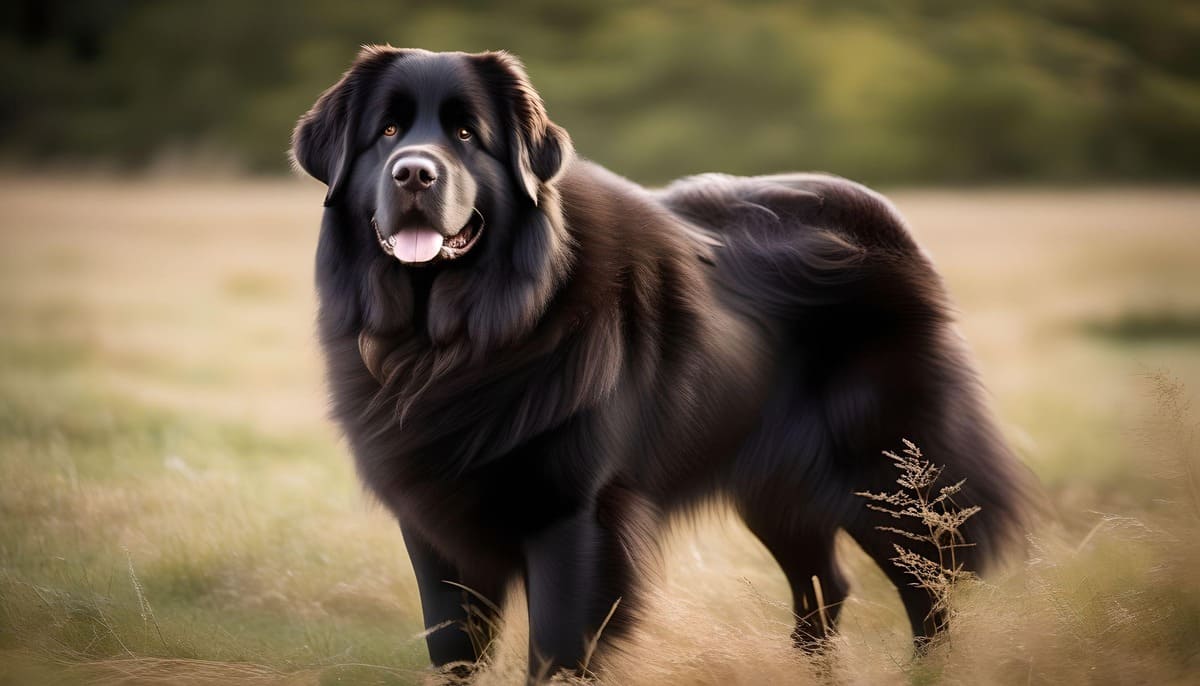
Newfoundland Dog Origin
The Newfoundland dog’s origin traces back to Newfoundland, Canada. Developed by crossbreeding indigenous dogs with European breeds brought by explorers and fishermen, Newfoundlands were initially used for water rescue and hauling nets. Their impressive swimming abilities and gentle disposition contributed to their success as working dogs in harsh maritime environments.
Appearance of Newfoundland Dogs
Newfoundland dogs are known for their distinctive appearance. They have a large, strong build, a broad head with small, triangular ears, and expressive eyes. Their double coat is water-resistant, with a dense, coarse outer layer and a soft, insulating undercoat. Coat colors can be black, brown, gray, or Landseer (white with black markings).

Newfoundland Dog Temperament
Newfoundlands are renowned for their gentle and sweet temperament. They are known to be good with children, making them excellent family pets. These dogs are often described as patient, kind, and calm, displaying a natural instinct to protect their loved ones. Their friendly nature and intelligence contribute to their popularity as both working dogs and companions.
Newfoundland Dog Hypoallergenic
Newfoundland dogs are not considered hypoallergenic. While they have a dense, double coat that sheds, causing allergenic reactions in some individuals, hypoallergenic breeds typically shed less dander and hair. Potential owners with allergies should spend time with a Newfoundland before deciding to bring one into their home.
Newfoundland Dog Personality
The Newfoundland dog is characterized by a warm and loving personality. They are known for their loyalty, patience, and sociable nature. Despite their imposing size, Newfoundlands are often described as gentle giants, displaying a strong bond with their human family members. Their adaptable and easygoing demeanor makes them well-suited for various living environments.
Newfoundland Dog Behavior Problems
While Newfoundlands are generally well-behaved, like any breed, they may exhibit behavior problems if not properly trained or socialized. Common issues include excessive drooling, potential for obesity, and, in some cases, separation anxiety. Consistent training, early socialization, and regular exercise are crucial in addressing and preventing behavior problems.
Newfoundland Dog Size
Newfoundlands are large dogs, known for their impressive size and strength. Adult males typically stand between 28 to 30 inches at the shoulder, while females range from 26 to 28 inches. Their robust build and substantial bone structure contribute to their overall size.

Newfoundland Dog Size Comparison
In comparison to many other dog breeds, Newfoundlands are considered large. Their size is especially notable when compared to smaller or medium-sized breeds. This substantial size is a key characteristic that contributes to their strength and versatility in various roles, from water rescue to working on land.
Newfoundland Dog Weight
The weight of Newfoundland dogs can vary based on factors such as gender and genetics. Adult males typically weigh between 130 to 150 pounds, while females usually weigh between 100 to 120 pounds. Proper nutrition and regular exercise are essential to maintaining a healthy weight for these large dogs.
Newfoundland Dog Height
The height of Newfoundland dogs is measured at the shoulder. Adult males typically stand between 28 to 30 inches, while females range from 26 to 28 inches. Their height, coupled with their robust build, contributes to their imposing yet gentle presence.
Full Grown Newfoundland Dog
Newfoundlands are considered full-grown at around 2 to 3 years of age. During this time, they reach their maximum height and weight. While they may continue to mature mentally and behaviorally, the physical development generally stabilizes, showcasing the impressive size and stature for which the breed is known.
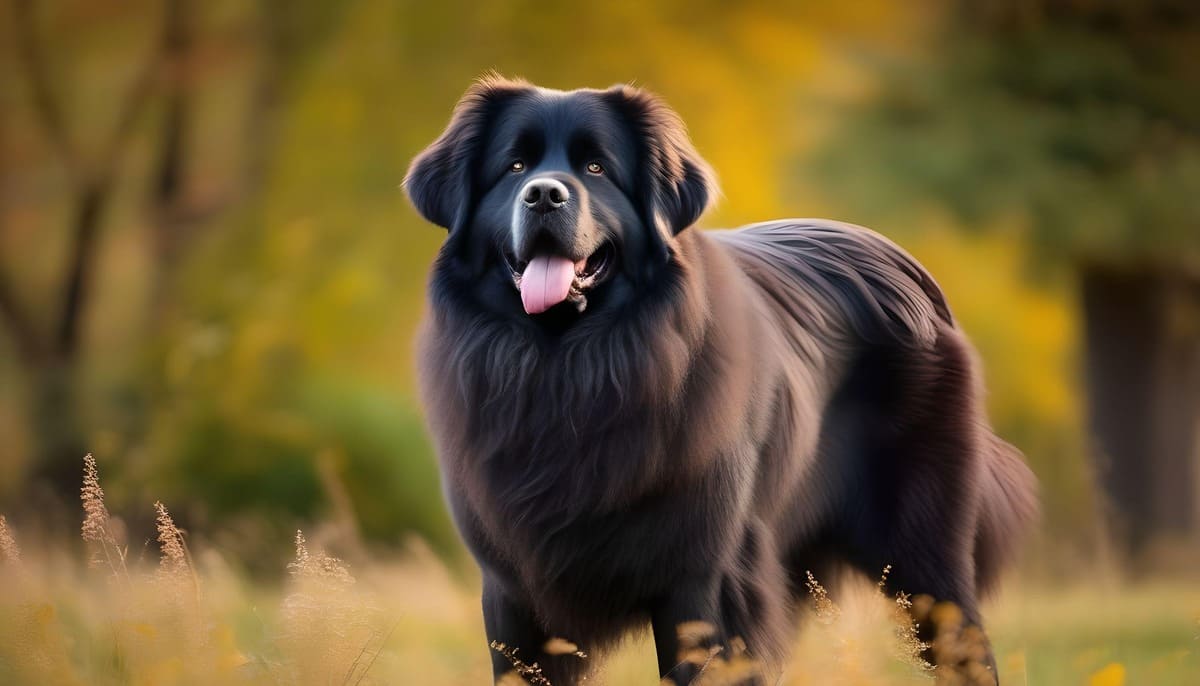
Newfoundland Dog Temperature Tolerance
Newfoundland dogs have a good temperature tolerance range, thanks to their thick double coat. They are well-suited to colder climates and can comfortably tolerate temperatures as low as 20°F (-6°C). However, owners should exercise caution in warmer weather, as the breed’s dense coat may make them more susceptible to heat-related issues. In temperatures exceeding 70°F (21°C), precautions such as providing shade, ensuring access to cool water, and avoiding strenuous activities during peak heat hours are essential to prevent overheating. Proper care and monitoring are crucial to maintaining the well-being of Newfoundland dogs in varying temperature conditions.
Newfoundland Dog Price
In the USA, the price of a Newfoundland dog from a reputable breeder can range from $1,000 to $2,500 or more, depending on factors such as pedigree, health clearances, and the breeder’s reputation. It’s important to note that additional costs, including veterinary care, grooming, and supplies, should be considered. In India, Newfoundland puppies are generally less expensive, ranging from ₹40,000 to ₹1,00,000 or more.
Newfoundland Dog Price In India
The average cost of a Newfoundland dog in India can range from ₹40,000 to ₹1,00,000, depending on various factors such as the breeder’s reputation, location, and lineage of the Dog. Additionally, purebred Newfoundland puppies from well-known breeders tend to be more expensive than those from less reputable sources.
Newfoundland Dog Puppy Price In India
The Average Newfoundland Puppy price in India is between ₹20,000 to ₹60,000. When considering the price of a Newfoundland puppy in India, it’s important to factor in additional costs such as vaccinations, food, grooming, and medical bills. Owning a large breed like the Newfoundland can also mean higher costs for dog beds, toys, and even larger vehicles for transportation.
Newfoundland Dog Prices In Major Indian Cities
If you’re interested in bringing home a Newfoundland dog in India, you might be wondering how much they cost in different cities.
| Newfoundland Dog Price List India | |
|---|---|
| Different Locations | Newfoundland Dog Prices |
| Newfoundland Price in Delhi | ₹35,000 to ₹1,00,000 |
| Newfoundland Price in Kolkata | ₹30,000 to ₹90,000 |
| Newfoundland Price in Mumbai | ₹80,000 to ₹2,50,000 |
| Newfoundland Price in Agra | ₹40,000 to ₹80,000 |
| Newfoundland Price in Chennai | ₹60,000 to ₹1,10,000 |
| Newfoundland Price in Pune | ₹30,000 to ₹75,000 |
| Newfoundland Price in Bangalore | ₹35,000 to ₹85,000 |
| Newfoundland Price in Hyderabad | ₹32,000 to ₹70,000 |
| Newfoundland Price in Chandigarh | ₹35,000 to ₹80,000 |
| Newfoundland Cat Price in Kerala | ₹45,000 to ₹94,000 |
| Newfoundland Price in Jaipur | ₹40,000 to ₹85,000 |
| Newfoundland Price in Indore | ₹38,000 to ₹90,000 |
Newfoundland Dog Breeders
Here are top sources in different countries where you can buy Newfoundland Dogs:
| Country | Guidelines for Finding Breeders |
|---|---|
| USA | Check the American Kennel Club (AKC) website for a list of recognized breeders. Look for breed clubs and ask for recommendations. Visit dog shows to meet breeders in person. Ensure health clearances and ethical breeding practices. |
| Canada | Consult the Canadian Kennel Club (CKC) and Newfoundland Dog Club of Canada for breeder listings. Seek referrals from local veterinarians or Newfoundland dog owners. Verify health clearances and breeder reputation. |
| UK | Visit The Kennel Club (KC) website for a list of accredited breeders. Attend dog shows or events hosted by breed clubs. Seek recommendations from local Newfoundland dog communities. Ensure health testing and responsible breeding practices. |
| Australia | Check the Australian National Kennel Council (ANKC) website for breeders. Contact the Newfoundland Dog Club of Victoria or other state-specific clubs. Ensure breeders adhere to health and ethical breeding standards. |
| India | In India, contact the Kennel Club of India (KCI) for breeder recommendations. Engage with local dog clubs or enthusiasts for advice. Ensure breeders follow ethical practices, prioritize health checks, and provide proper documentation. |
Factors that Affect the Price of Newfoundland Dog
Several factors influence the price of Newfoundland dogs. The pedigree and lineage of the dog play a significant role, with dogs from well-established bloodlines often commanding higher prices. Health clearances, including screenings for common breed-specific issues, also impact the cost. The reputation of the breeder, their experience, and the quality of care provided to the dogs contribute to pricing. Additionally, the demand for Newfoundland dogs in a particular region and the overall rarity of the breed can influence the market price.
Monthly Maintenance Cost of Newfoundland Dogs:
Owning a Newfoundland dog comes with ongoing maintenance costs. These costs include high-quality dog food suitable for large breeds, regular veterinary check-ups, vaccinations, and preventive medications. Grooming supplies, such as brushes and shampoos for their thick double coat, contribute to monthly expenses. Training classes, toys, and accessories are additional considerations. Emergency veterinary care and potential health issues, especially in a large breed, should also be factored into the monthly budget for comprehensive care.
Availability of Newfoundland Dogs in India:
The availability of Newfoundland dogs in India can vary based on factors such as geographic location and the popularity of the breed. While Newfoundland puppies may be found through reputable breeders or rescue organizations, the breed’s availability might not be as widespread as more common breeds. Prospective owners should contact local kennel clubs, breed-specific clubs, and reputable breeders to inquire about the current availability of Newfoundland dogs in their region. Importantly, individuals should prioritize responsible breeding practices and ensure the well-being of the dogs when acquiring a Newfoundland in India.
Newfoundland Dog price comparison:
If you’re interested in purchasing a Newfoundland dog, it’s a good idea to compare prices from different breeders. Newfoundland dog prices can vary depending on the breeder’s reputation, location, and the puppy’s age, gender, and physical characteristics. By doing your research and comparing prices from different breeders, you can find a Newfoundland dog that fits your budget and meets your needs.
How to negotiate the price of Newfoundland Dog:
If you’ve found a Newfoundland dog that you’re interested in but the price is outside of your budget, it’s worth considering negotiating with the breeder. However, it’s important to approach negotiations with respect and understanding. Keep in mind that breeders invest a lot of time and effort into breeding and caring for their dogs. If you’re respectful and reasonable in your negotiations, you may be able to come to an agreement that works for both parties.
The true cost of owning a Newfoundland Dogs:
vWhen considering the costs of owning a Newfoundland dog, it is important to consider the additional costs above the purchase price. These can include food, care, medical bills and education. Additionally, larger breeds such as Newfoundlands may require more expensive equipment such as larger cages and dog beds. By understanding the true costs of owning a Newfoundland dog, you can ensure that you are prepared to take on the financial responsibility that comes with being a pet.
Newfoundland Dog Facts
Newfoundland dogs are a fascinating breed with many interesting facts. Here are 10 Facts we described below:
- They were originally bred as working dogs in Newfoundland, Canada, where they were used for a variety of tasks, including pulling fishing nets and as rescue dogs.
- Newfoundland dogs are excellent swimmers and have webbed feet, making them well-suited for water rescue.
- They have a thick double coat to help keep them warm in cold water, and their fur comes in a variety of colours including black, brown, grey and white and black.
- Newfoundland dogs are known for their gentle and loving nature, which makes them great pets.
- They are also intelligent and easy to train but need regular exercise and social interaction to keep them happy and healthy.
- Newfoundland is one of the largest dog breeds, with males weighing 130-150 pounds and females 100-120 pounds.
- They have a lifespan of 8-10 years, but with proper care and attention, some Newfoundlands live up to 12 years or more.
- Newfoundland dogs have certain health problems, including hip and elbow dysplasia, heart disease and bloat. Regular veterinary checkups and proper care can help prevent and manage these health problems.
- Newfoundlanders have appeared in a number of films and television shows, including the popular children’s film “Beethoven” and the TV series “Peter Pan and the Pirates.”
- Newfoundland is the dog of the Canadian province of Newfoundland and Labrador and is celebrated at the annual Newfoundland and Labrador Kennel Club show.
Pros and Cons of Newfoundland Dog
Here are some common Pros and Cons of owning a Newfoundland Dogs:
| Pros of Newfoundland Dogs | Cons of Newfoundland Dogs |
|---|---|
| Gentle and friendly temperament | Size: Newfoundlands are a large breed, which may not be suitable for all living situations. |
| Excellent with children and families | Shedding: They have a thick double coat that sheds heavily, requiring regular grooming. |
| Great swimmers and water rescue dogs | Drooling: Some Newfoundlands are prone to drooling, especially after eating or drinking. |
| Protective instincts make them good watchdogs | Requires regular exercise to prevent weight-related issues. |
| Intelligent and trainable | Health Issues: Like many large breeds, they may be prone to certain health problems. |
| Adaptable to various living environments | Grooming: Their dense coat requires regular maintenance, and they can get dirty easily. |
| Good with other pets and animals | Cost: Owning a large dog can be more expensive in terms of food, veterinary care, and grooming. |
| Impressive appearance and majestic presence | Limited space: Due to their size, they may not be suitable for small living spaces. |
| Versatile: Can participate in various activities such as obedience, water rescue, and therapy work | Shorter Lifespan: Newfoundlands typically have a shorter lifespan compared to smaller breeds. |
| Calm and easygoing demeanor | Joint Issues: Large breeds can be prone to joint problems, requiring attention to diet and exercise. |
Newfoundland Dog Grooming
Newfoundlands have a thick, water-resistant double coat that requires regular grooming to keep them healthy and looking their best. Here are some grooming tips for Newfoundland dogs:
- Brushing: Due to their dense double coat, Newfoundlands shed quite a bit. Regular brushing helps to remove loose fur and prevent matting. Brush your Newfoundland at least two to three times a week, or even more frequently during the shedding seasons (spring and fall).
- Bathing: Newfoundlands are known for their love of water, and they tend to get dirty easily. Bathing is necessary to keep their coat clean and to prevent odor. However, frequent bathing can strip their coat of natural oils, so it’s essential not to overdo it. Aim to bathe your Newfoundland every few months or as needed.
- Drying: After bathing or swimming, make sure to thoroughly dry your Newfoundland. Their dense coat can trap moisture, leading to skin issues if not dried properly. Use a towel or a hairdryer on a low heat setting to ensure they are completely dry.
- Grooming Tools: Invest in good-quality grooming tools, such as a slicker brush, a comb with both wide and narrow teeth, and possibly thinning shears. These tools will help you manage their thick coat and prevent mats and tangles.
- Ear Cleaning: Newfoundlands are prone to ear infections due to their floppy ears. Check their ears regularly for signs of redness, odor, or discharge. Clean their ears with a veterinarian-approved ear cleaner if necessary.
- Nail Trimming: Keep an eye on your Newfoundland’s nails and trim them regularly. Long nails can cause discomfort and affect their gait. If you’re not comfortable trimming their nails yourself, ask your veterinarian or a professional groomer for assistance.
- Dental Care: Dental hygiene is important for dogs, including Newfoundlands. Brush their teeth regularly using a dog-friendly toothbrush and toothpaste, and consider providing dental chews or toys to help keep their teeth clean.
- Anal Gland Expression: Some dogs may require their anal glands to be expressed regularly. If you notice your Newfoundland scooting or licking excessively, it could be a sign of anal gland issues. Consult your veterinarian for guidance on expression if needed.
- Trimming Paw Pads: Check and trim the hair between your Newfoundland’s paw pads. This helps prevent mats and keeps their paws clean.
- Regular Check-ups: In addition to home grooming, schedule regular check-ups with a professional groomer to maintain your Newfoundland’s coat health. They can help with more intricate grooming tasks and provide additional advice on coat care.
Care Tips for Newfoundland Dog
Taking care of a Newfoundland dog can be a rewarding experience, but it requires dedication and effort. Here are some care tips for Newfoundland dog owners:
- Exercise: Newfoundland dogs require regular exercise to stay healthy and happy. They are a large breed, so they need plenty of space to run and play. Take your dog for daily walks or runs, and consider adding swimming to their exercise routine.
- Grooming: Newfoundland dogs have a thick double coat that requires regular grooming to prevent matting and tangling. Brush your dog’s coat at least once a week, and more often during shedding season. Trim their nails and clean their ears regularly.
- Diet: A healthy diet is essential for a Newfoundland dog’s overall health and well-being. Choose a high-quality dog food that is appropriate for their age and activity level. Avoid overfeeding your dog, as Newfoundland dogs are prone to obesity.
- Training: Newfoundland dogs are intelligent and easy to train, but they require early socialization and obedience training. Teach your dog basic commands like “sit,” “stay,” and “come,” and consider enrolling them in obedience classes.
- Health: Regular vet checkups are important for identifying and treating health issues early. Keep up to date with your dog’s vaccinations and schedule regular dental cleanings.
- Safety: Newfoundland dogs are loyal and protective of their families, but they can also be prone to wandering. Keep your dog on a leash or in a secure yard to prevent them from wandering off or getting lost.

Health Issues of Newfoundland Dog
Newfoundland dogs are generally known for their gentle and friendly nature. However, like all breeds, they may be prone to certain health issues. It’s important to note that individual dogs may vary, and not all Newfoundlands will experience these problems. Here are some health issues commonly associated with Newfoundland dogs:
- Hip Dysplasia: This is a common orthopedic issue in many large breeds, including Newfoundlands. It occurs when the hip joint doesn’t fit properly into the hip socket, leading to arthritis and lameness over time.
- Elbow Dysplasia: Similar to hip dysplasia, elbow dysplasia is a malformation of the elbow joint. It can cause pain and lameness in affected limbs.
- Heart Issues: Newfoundlands are prone to certain heart conditions, including subaortic stenosis (a narrowing of the aorta just below the heart) and dilated cardiomyopathy. Regular veterinary check-ups, including cardiac screenings, are important.
- Cystinuria: This is a genetic disorder that can lead to the formation of stones in the urinary tract, potentially causing urinary blockages.
- Gastric Torsion (Bloat): Like many deep-chested breeds, Newfoundlands may be at a higher risk of developing gastric torsion, a life-threatening condition where the stomach fills with gas and twists on itself. This requires immediate veterinary attention.
- Cancer: As with many larger breeds, Newfoundlands can be prone to certain types of cancer. Regular veterinary check-ups and awareness of any unusual lumps or bumps are crucial.
- Obesity: Due to their large size, Newfoundlands can be prone to obesity. Maintaining a healthy diet and providing regular exercise is important in preventing weight-related health issues.
- Eye Conditions: Some Newfoundlands may be susceptible to certain eye conditions such as cataracts or progressive retinal atrophy (PRA).
- Hypothyroidism: This condition occurs when the thyroid gland doesn’t produce enough thyroid hormone. It can lead to various health problems and may require lifelong medication.
- Joint Issues: Newfoundlands’ large size can put stress on their joints, potentially leading to issues such as arthritis. Providing a balanced diet and appropriate exercise can help manage joint health.
Do Newfoundland Dogs Shed
Yes, Newfoundland dogs do shed. They have a double coat, and shedding is a natural part of their hair growth cycle. During seasonal changes, shedding may be more noticeable. Regular brushing is crucial to manage shedding, remove loose hair, and keep their coat healthy. Despite shedding, the joy of having a Newfoundland companion often outweighs the grooming efforts.
Newfoundland Dog Shedding
Newfoundlands undergo regular shedding, which becomes more noticeable during seasonal transitions. Brushing their double coat is crucial to remove loose hair, prevent matting, and maintain overall coat health. Despite shedding, the joys of owning a Newfoundland often outweigh the grooming efforts required.
Newfoundland Dog Lifespan
The average lifespan of a Newfoundland dog is between 8-10 years. However, with proper care and attention, some Newfoundland dogs have been known to live up to 12 years or more. Regular exercise, a healthy diet, and regular vet checkups can help ensure that your Newfoundland dog lives a long and healthy life.
Newfoundland Dog Food
It is important to note that these serving sizes are general recommendations and may vary depending on your dog’s age, weight, and activity level:
| Food Type | Serving Size | Frequency |
|---|---|---|
| Dry kibble | 4-5 cups | Daily |
| Wet/canned food | 2 cans | Weekly |
| Raw food | 2-3 lbs | Weekly |
| Fresh fruits and vegetables | 1-2 cups | Daily |
| Protein sources (chicken, fish, beef) | 1-2 cups | Daily |
Dog Names For Newfoundlands
It is important to choose a name that best suits your Newfoundland dog’s personality and characteristics:
| Male Names | Female Names |
|---|---|
| Bear | Bella |
| Brutus | Daisy |
| Duke | Luna |
| Max | Sadie |
| Zeus | Molly |
| Samson | Maggie |
Newfoundland Dog Care, Training and Grooming Video
Conclusion:
In conclusion, the price of Newfoundland dogs in India varies depending on factors such as location, breeder reputation, and lineage. On average, the cost of a Newfoundland puppy in India ranges from 50,000 to 1,50,000 INR. It’s important to do your research and find a reputable breeder who prioritizes the health and well-being of their dogs. Additionally, owning a Newfoundland dog requires dedication and effort, including regular exercise, grooming, and veterinary care. By providing proper care, you can ensure that your Newfoundland dog remains healthy, happy, and a beloved member of your family.
Frequently Asked Questions on Newfoundland Dogs:
-
Do Newfoundland Dogs Shed?
Yes, Newfoundland dogs have a thick, double coat that sheds year-round and heavily during shedding season. Regular brushing and grooming can help manage to shed.
-
How Big Are Newfoundland Dogs?
Newfoundland dogs are large dogs, with males typically weighing between 130-150 pounds and standing 28 inches tall at the shoulder. Females are slightly smaller, weighing between 100-120 pounds and standing 26 inches tall at the shoulder.
-
How Much Does A Newfoundland Dog Cost?
The cost of a Newfoundland dog can vary depending on factors such as the breeder’s reputation, location, and lineage. On average, a Newfoundland puppy can cost anywhere from 50,000 to 1,50,000 INR in India.
-
Are Newfoundland’s Good Dogs?
Newfoundlands are known for their sweet and gentle temperament, making them great family dogs. They are loyal, affectionate, and enjoy being around people.
-
Do Newfoundland Dogs Have Webbed Paws?
Yes, Newfoundland dogs have webbed paws, which help them swim better. Their webbed paws also make them excellent working dogs, especially in water rescues.
-
What Does A Newfoundland Dog Look Like?
Newfoundland dogs are large and muscular with a thick, water-resistant double coat. They come in various colours, including black, brown, grey, and white with black markings.
-
How Much Do Newfoundland Dogs Weigh?
Newfoundland dogs are large dogs, with males typically weighing between 130-150 pounds and females weighing between 100-120 pounds.
-
What Is A Newfoundland Dog?
Newfoundland dogs are a large breed of dog that originated from the Canadian province of Newfoundland.
-
Are Newfoundland Dogs Aggressive?
No, Newfoundland dogs are not typically aggressive.
Recommended –








